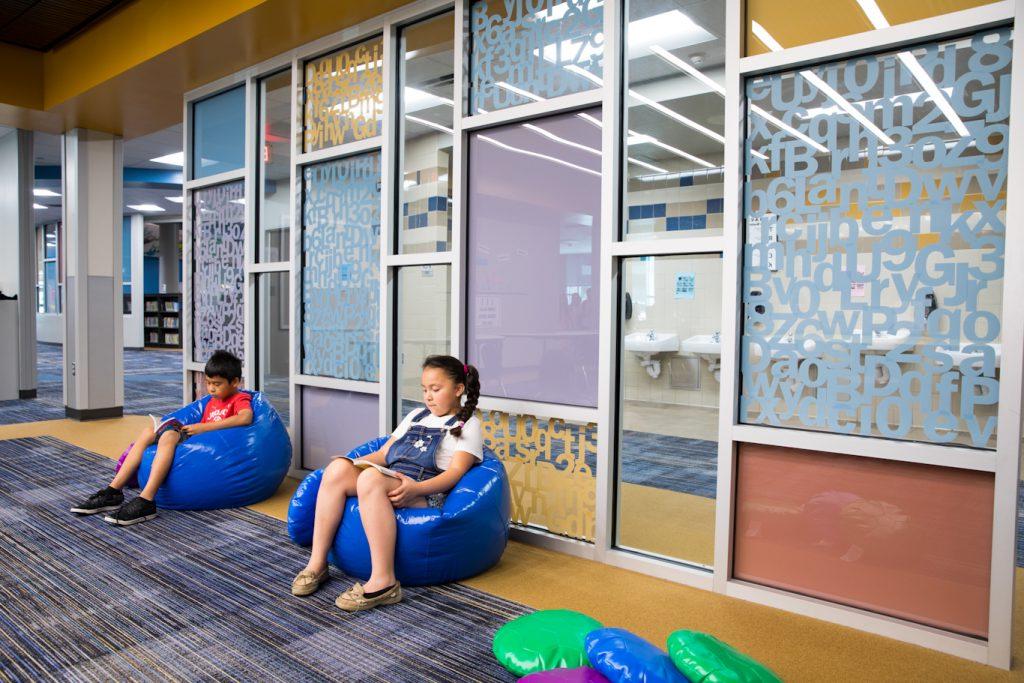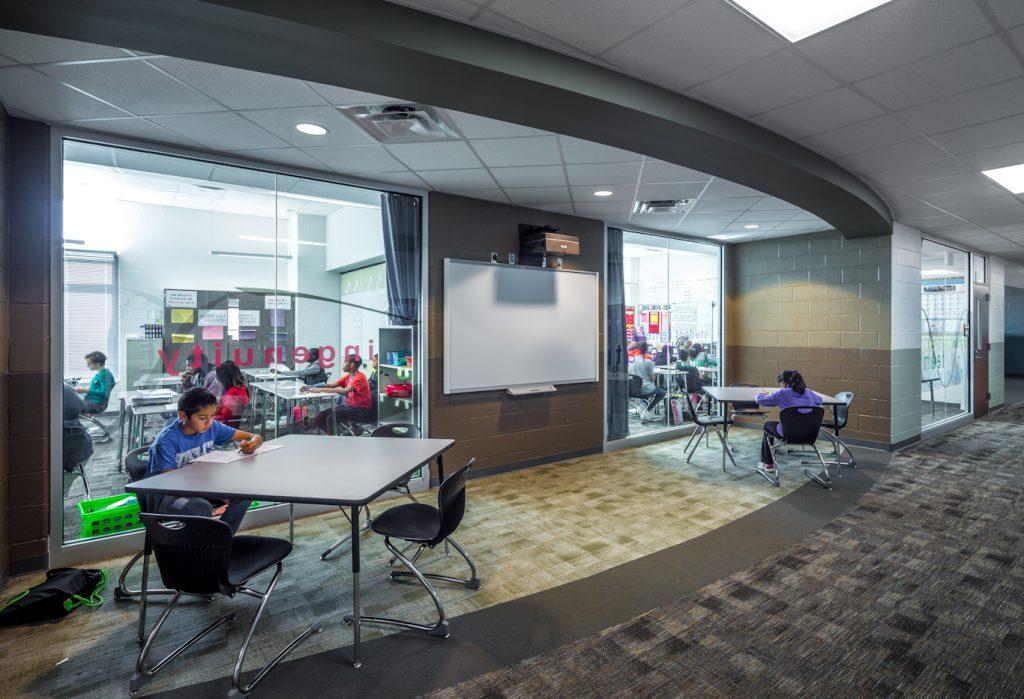Creative Difference: Bridging The Gap Between Designers And School Districts
Date
October 24, 2019The next generation of school design needs to address a broad range of elements that are more critical to learning environments than they were in the past. These include: alternative teaching spaces, transparency, safety, flexibility, and sustainability. The design challenge lies in addressing these elements successfully within tight budget constraints and strict district standards. On top of this, the process is often stifled due to the local political atmosphere, stakeholders’ resistance to change, and/or apprehension towards design solutions those pose a potential risk. There are often concerns to ensure parity across district schools which can make officials reluctant to introduce new ideas if they have not been incorporated at other campuses. Unfortunately, this can cause designers to perpetuate mistakes from the past. However, when done right, the design process can be efficient and innovative without increasing the budget. Ways to incorporate next gen learning elements without breaking the bank include:

Making use of underutilized spaces, such as hallways, can promote different types of learning. Image by IBI.
Alternate Teaching Spaces
An aspect of next gen learning includes reducing the size of classrooms and offsetting any potential classroom loss by utilizing corridors and collaborative areas as alternate teaching spaces. This will lower the overall square footage of the building as well as cost, as outlined in Blueprint for Tomorrow: Redesigning Schools for Student Centered Learning. Another approach is to make use of traditionally underutilized areas such as hallways. This can promote different types of learning environments and learning styles in addition to presenting the opportunity for designers to develop creative solutions for unique spaces.

Window glazing offers both security and connection for classrooms. Image by IBI.
Transparency
Another characteristic of next gen learning is the impact of daylighting on the classroom. Studies have shown that test scores are higher in rooms with windows than without. For this reason designers should consider putting windows in every classroom. Visual transparency is another growing desire for next gen classrooms. It’s been shown that transparency and/or glazing in school design can foster collaboration amongst teachers and students. This use of glass creates a sense of openness and community which ultimately promotes the idea of working as a team for students. According to Architect Peter Gisolfi, interior classroom walls can be designed to include a higher percentage of glazing versus a CMU or drywall partition with tile. Classroom transparency will evidently increase daylighting, thus reducing energy costs while providing affordable glazing options to offset standard partitions.
Security
What about the topic on everybody’s mind: school security? Will windows or glazing limit necessary security measures that are required by the district? Rather than sacrificing comfort by introducing military-grade materials and stiff architectural elements, designers should consider design solutions that provide meaningful security and still support the school’s core purpose: to foster education in a safe environment. For example, Cloverleaf Elementary School in Houston, Texas addressed safety concerns by installing sliding marker boards that could be used to cover classroom windows if security was breached. This solution offered a dual opportunity for instructional use as well as securing the classroom as a safe room during crisis mode. Everyday classroom items that have a dual purpose also reduces the budget.

The use of glass creates a sense of openness and community which ultimately promotes the idea of working as a team. Image by IBI.
Flexibility & Technology
Technology is a driving force of change in education which, in turn, has a great impact on design. For example, Walnut Middle School in Sunbury, Ohio increased its library utilization by 1000% by transforming it into a Learning Centre and integrating technology and mobile furniture to make the space more flexible and interactive. The Learning Center serves as a makerspace and library and uses flexible furniture that adapts to any curriculum. To allow for mobility and collaboration zones, the school also reduced the number of physical books in the space and relocated them along the perimeter of the room.
Over time, as schools embrace e-books, the cost and need for physical books and shelving will continue to shrink. Rather than traditional libraries, users will come to think of these spaces as learning hubs without any added cost. Interactive projectors, touch screens, and Chrome Books can all be used to offset the cost of what is normally included in a standard library.
Sustainability
Often times the most cost-effective products do not offer long-term benefits that suit the district from a maintenance standpoint. Many district standards require VCT flooring because of budget concerns. This flooring is normally stripped and waxed three times a year by the districts, creating a financial burden on maintenance and labor.
Products such as linoleum, marmoleum and LVT may cost more upfront, but the life cycle cost and sustainability factors will outperform VCT and its restricted limitations. It can be a challenge, but education architects should show their clients alternative finishes that not only strengthen the design but offer a budget-friendly, low-maintenance alternative that contributes to a healthier environment for teachers and students.
A Solution
Architects and designers are hired by a school district to provide services based on their needs and requirements. It can be more beneficial to the project if clients can avoid pre-designing and pre-determining the project based on their established budget, scope and standards. When this situation is avoided, Architects and Designers are able to work with the school district more successfully and collaboratively. Pulling back the curtain and sharing what is really and truly important to the district will create a collaborative opportunity to implement next gen design elements that will not only shape a building, but create an innovative and exciting learning environment that is ready to educate the next generation.
Aaron Sanders is a registered Architect in the state of Texas with a Master of Architecture degree from Morgan State University. The native Houstonian joined IBI Group in 2008 and has developed a wide-reaching professional background, ranging from residential to commercial projects, with a primary focus on K-12 educational work. With more than 15 years of experience, he has become a multi-faceted Project Manager, taking on programming, design, technical production as well as construction administration. Aaron also works closely with students who are interested in the field, speaking at schools and providing mentorship.









